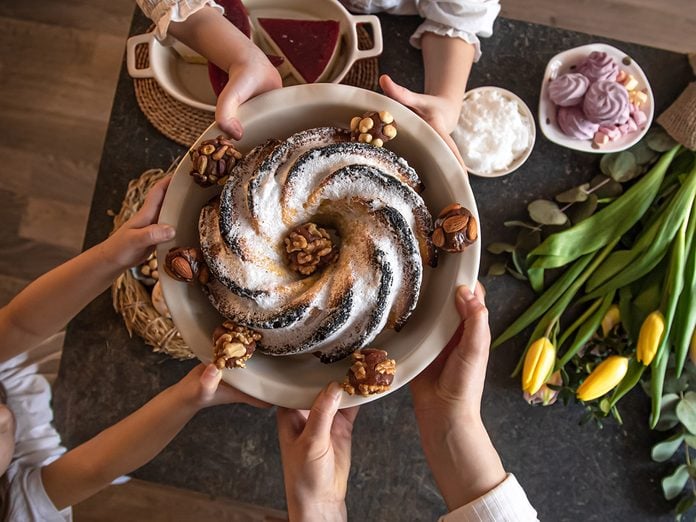
Easter traditions around the world
For Christians, Easter marks the resurrection of Jesus and is celebrated all around the world through unique traditions. Although you may be familiar with the North American custom of a large family gathering and maybe even an egg hunt with the kids, it’s fascinating to take a look at how this springtime holiday is observed across different countries and cultures.
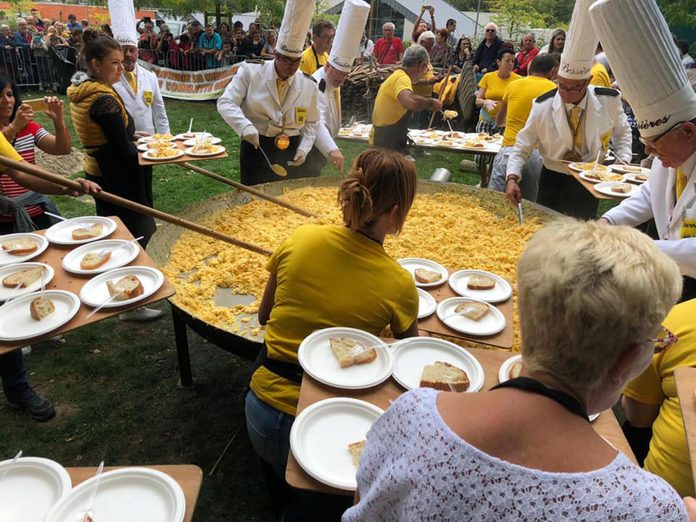
France: Cooking up a giant omelette
In France, Easter traditions are a case of “go big or go home.” Since 1973, members of the Brotherhood of the Giant Omelette have gathered in Bessières, France, to cook an omelette made from a whopping 15,000 eggs. This tasty tradition is kept alive by an association of volunteer cooks who use oar-like wooden spoons and a four metre wide pan to prepare the feast over a large fire in the town square. The mouth-watering event attracts thousands of people every year, who gather to watch and wait for a taste.
How did this begin? The legend goes that when French military leader Napoléon Bonaparte and his army stopped to rest for a night near the town, he ate an omelette so delicious that he ordered the townspeople to gather all the eggs they had to prepare a giant version for his army the next day.
If you’ll be cooking enough ham to feed a small army yourself, these Easter leftover recipes may come in handy.
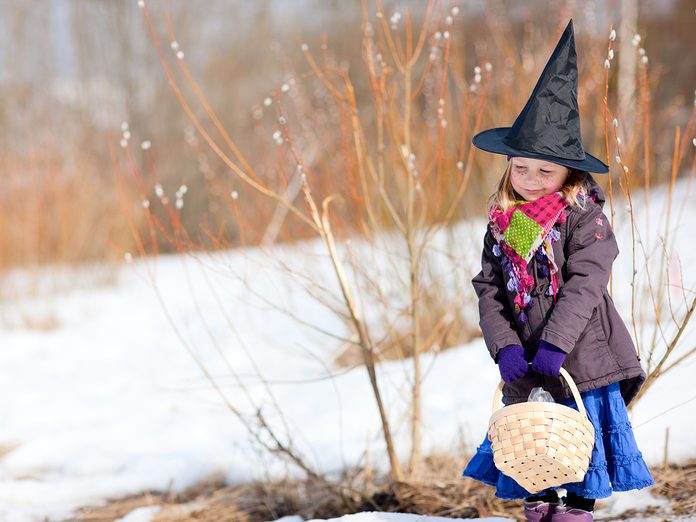
Finland: Easter witches
This Nordic country’s Easter traditions have a dash of Halloween sprinkled into the mix. To celebrate the holiday, Finnish children dress up like witches and go knocking door-to-door reciting a traditional rhyme wishing neighbours a healthy year in exchange for a chocolate egg or coin. Willow twigs decorated with colourful feathers and paper are also carried to drive away evil spirits. The tradition stems from the belief that evil spirits and witches used to wander around the streets misbehaving before Easter.
Find out why the traditional Halloween colours are black and orange.
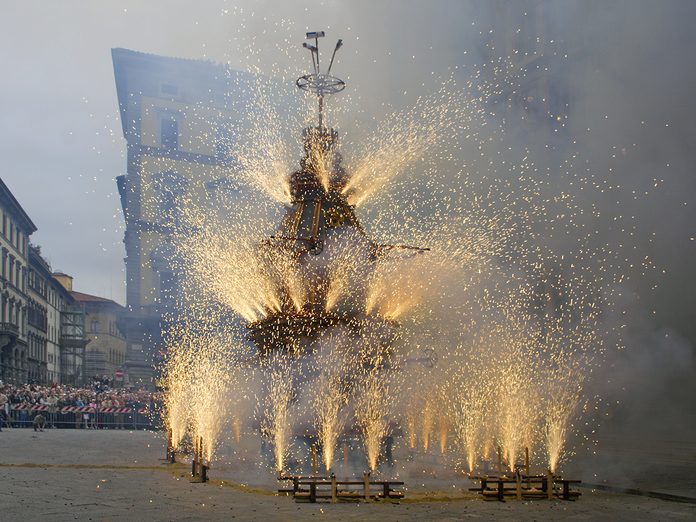
Italy: Fireworks explosion
You might need a pair of earmuffs if you’re in Florence, Italy, on Easter Sunday. The holiday starts off with a literal bang as locals gather to celebrate the 350-year-old Easter tradition of Scoppio del Carro, or “Explosion of the Cart.” A pair of oxen adorned in garlands pull a three-storey high wagon filled with fireworks through the streets to the front of the cathedral, accompanied by drummers, flag throwers and people in historical costumes. During Easter mass, the Archbishop of Florence lights a fuse that sends a dove-shaped rocket down a wire to cart, igniting a vibrant firework show. This extravagant custom dates back to the First Crusade and is meant to ensure a good harvest.
Explore some of the world’s strangest landmarks.

Australia: Chocolate bilbies
The beloved Easter bunny looks a bit different Down Under. In 1991, non-profit Rabbit-Free Australia launched a campaign to replace the rabbit—which is an invasive species in the country—with the endangered bilby. The big-eared marsupial is under threat due to an increase in predators and European wild rabbits taking over their habitats. Candy makers have taken to crafting chocolate and candy Easter bilbies in an effort to save the animal, with a portion of the proceeds going towards conservation organizations like the Save the Bilby Fund.
Psst—if you can’t get enough Mini-Eggs, these mouthwatering Easter desserts are a must.
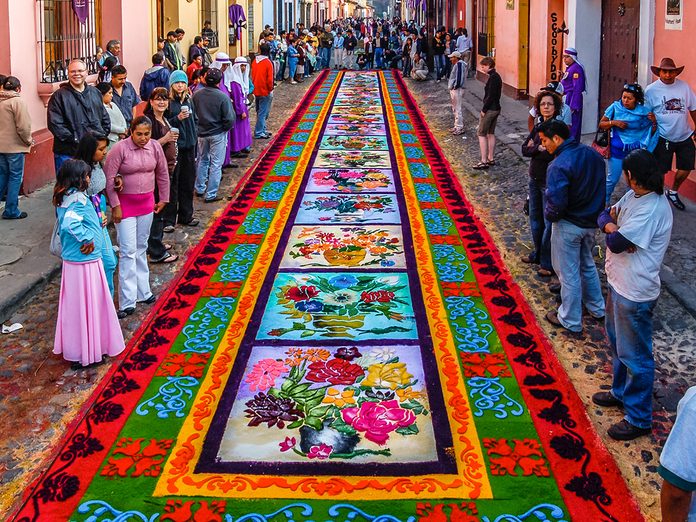
Guatemala: Colourful carpets
Cobblestone roads in Antigua, Guatemala, are transformed into colourful carpets to mark Easter. The stunning rainbow-hued pathways are made using coloured sawdust, vegetables and flowers and can stretch up to 800 metres long. Local artists use stencils to create the elaborate patterns and scenes covering traditional and religious themes. Feast your eyes on the display while you can—the Good Friday procession over the carpets will be followed by a clean-up team that’ll sweep up all remnants of the art.
Here are 10 places to see before they disappear.
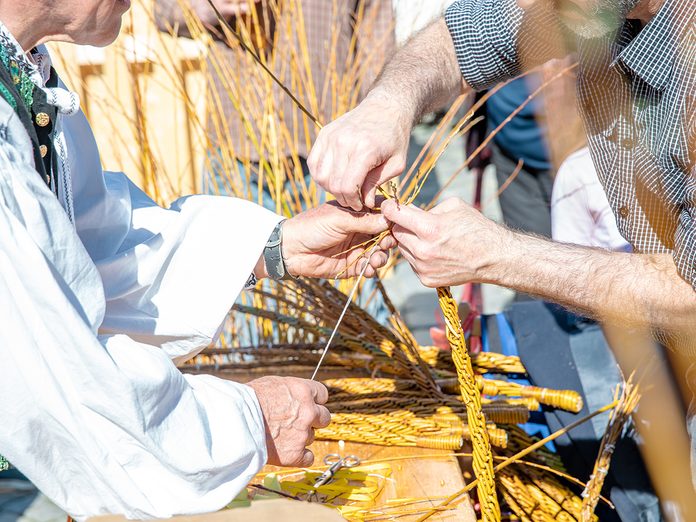
Czech Republic: Whipping tradition
The Czech whipping tradition known as pomlázka takes places on Easter Monday. Men will visit women—usually family members or friends—and lightly tap them with “whips” made from braided willow branches wrapped with colourful ribbons. Although not intended to be painful, the Easter tradition is said to bring the women vitality and fertility, which is symbolically transferred through the branches of the willow tree; the first tree to bloom in the spring. In exchange, men get painted eggs or chocolate, and, for those of age, an alcoholic shot for the road.
Check out these uniquely Canadian holiday traditions from coast to coast.
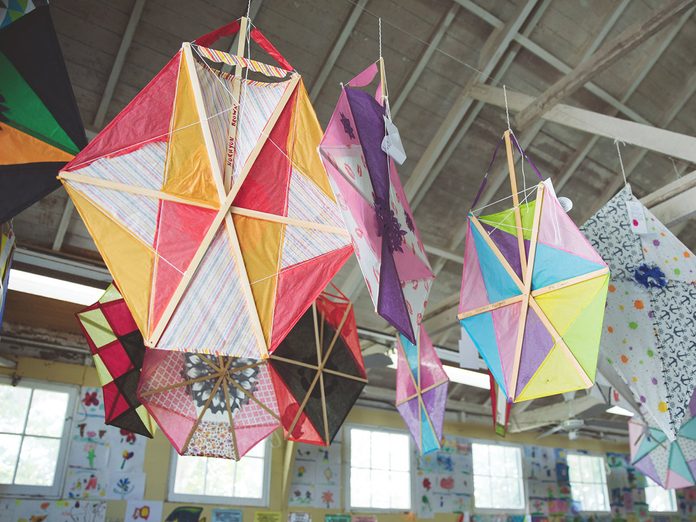
Bermuda: Kite flying
The sky’s the limit when it comes to Bermuda’s Easter traditions. To celebrate the holiday, Bermudians gather to fly homemade kites made using wooden sticks and decorative tissue paper, with the bright geometric designs in the sky symbolizing Jesus’s ascension into heaven. This Easter tradition is paired with a feast of codfish, hot cross buns and sunrise services on the beach.
Find out why this family’s Easter egg tradition isn’t just for the kids.
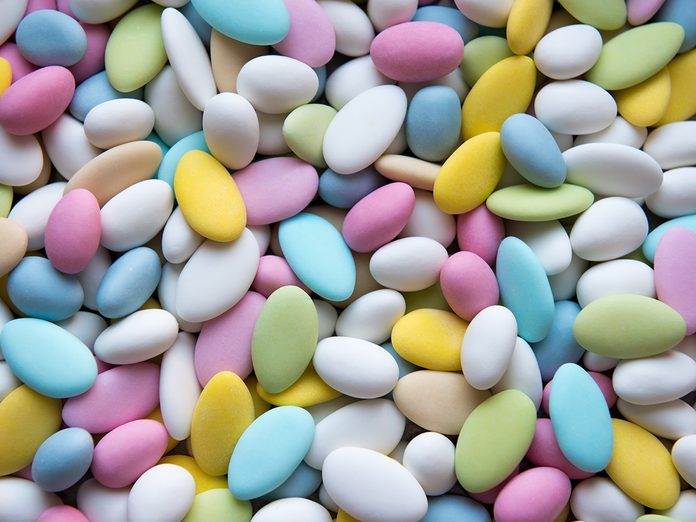
Portugal: Easter almonds
In Portugal, people gift each other almonds also known as amêndoas for Easter. The tasty treats come in all colours and coating such as hard candy, chocolate or caramelized sugar, giving you that extra crunch when you bite into it. It’s tradition for godchildren to give their godparents a stalk on Palm Sunday (the Sunday before Easter) and for godparents to give almonds in return on Easter Sunday. The egg-shaped almonds are said to represent the beginning of life and the spring season.
These happy Easter quotes will inspire hope.
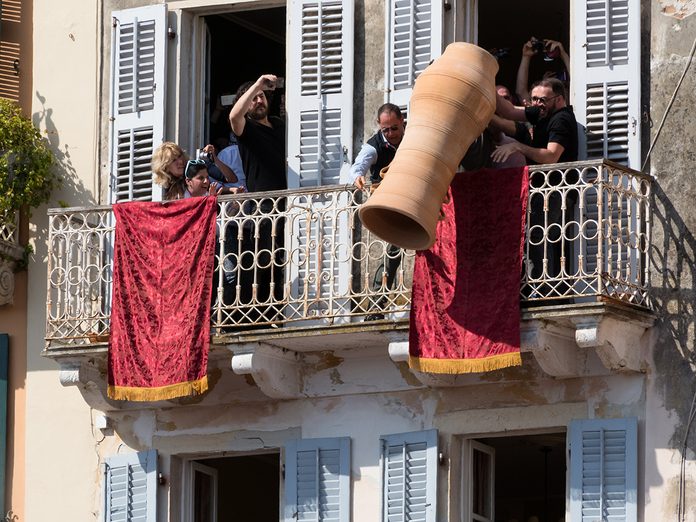
Greece: Pot smashing
When in Greece, you might want to keep an eye out for flying objects during Easter. When the clock strikes 11 on the morning of Easter Saturday, residents of the Greek island Corfu throw clay pots from their balconies onto the street. This noisy and therapeutic custom is performed to symbolize the earthquake that followed the resurrection of Jesus. Others believe the tradition started in the 16th century when people would throw all of their old belongings out of the window to prepare for the new year and mark new beginnings.
Find out why Easter is on a different Sunday every year.
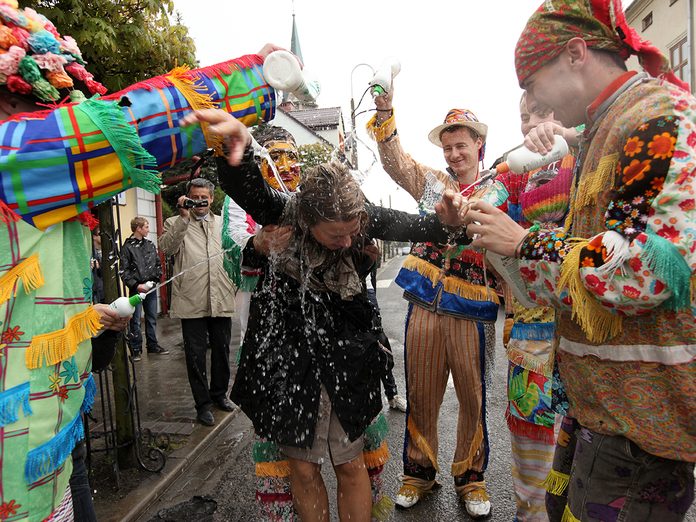
Poland: Water fights
Set the alarm for Easter Monday in Poland—also known as Wet Monday—unless you want to start your week off soaked in bed. Traditionally, boys will soak the girls on Monday, with the girls seeking their revenge the following day. The weapons of choice for this massive water fight range from buckets to water balloons. According to legend, the girl who gets soaked the most will be the next one to get married within the year. Although the origin of this Easter tradition is uncertain, the use of water may represent the spring rains, which ensure another successful growing season.
Next, check out 30 of Grandma’s best Easter recipes.